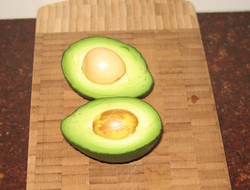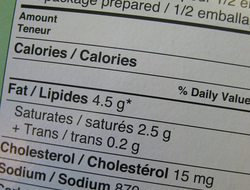Ways to Reduce Dietary Fat
Published: November 16, 2019
Are you tired of being told to reduce the amount of fat in your diet?
May be you've tried low fat and very low fat diets and found them tasteless and unsustainable.
Reducing fat in your diet doesn't necessarily mean following low or very low fat diets.
Many people living in North America consume far more fat than their bodies need.
General health recommendations for fat consumption suggest a daily intake of fat of between 20%-35% of your total caloric intake.
Most dietary fat is not immediately used by your body and will be stored as body fat until required to provide energy for metabolic reactions that occur in your body.
Fat, next to water, is the second most abundant nutrient in your body and like carbohydrate and protein is necessary for many important processes that occur in your body.
However, even if you stay within your total calorie intake, consuming more than 35% of your calories in fat usually means that you have to cut back on other foods which contain carboydrate, fibre, protein, and vitamins and minerals.
You will be cutting back on valuable nutrients that fat does not contain.
Reducing fat in your diet doesn't mean that you have to forfeit taste and texture. Some people even find they prefer lower fat food options.
However, there are a few facts to consider when reducing the amount of fat in your diet.
Not all fat is created equal as some fats have been associated with increased health risks such as atherosclerosis.
Other fats, such as essential fatty acids, appear to benefit health in several ways.
Type of fat and how much
Saturated fat and trans-fat both appear to be associated with heart disease and while it is not necessary, or posiible, to avoid them altogether your health can benefit by consuming less of these fats.
Nutrition fact labels now identify saturated fats and trans-fat and the % (percentage) of your daily recommended intake is provided. Look for products...link to the full article to learn more.
References
1.
Whitney, E. & Rady Rolfes, S. (2005). Understanding Nutrition. Belmont, CA: Thomson Wadsworth
2.
Gropper, S.S., Smith, J.L. & Groff, J.L. (2005). Advanced Nutrition and Human Metabolism (4thEd.). Belmont, CA: Thomson Wadsworth.


